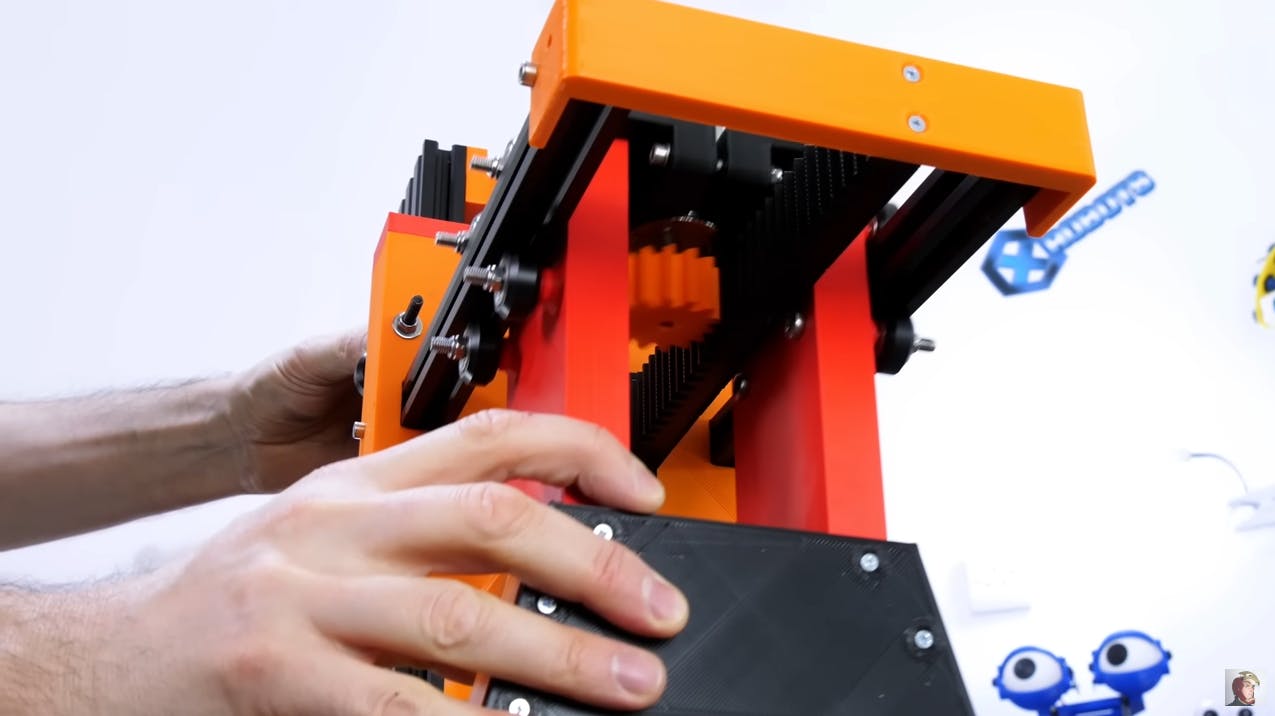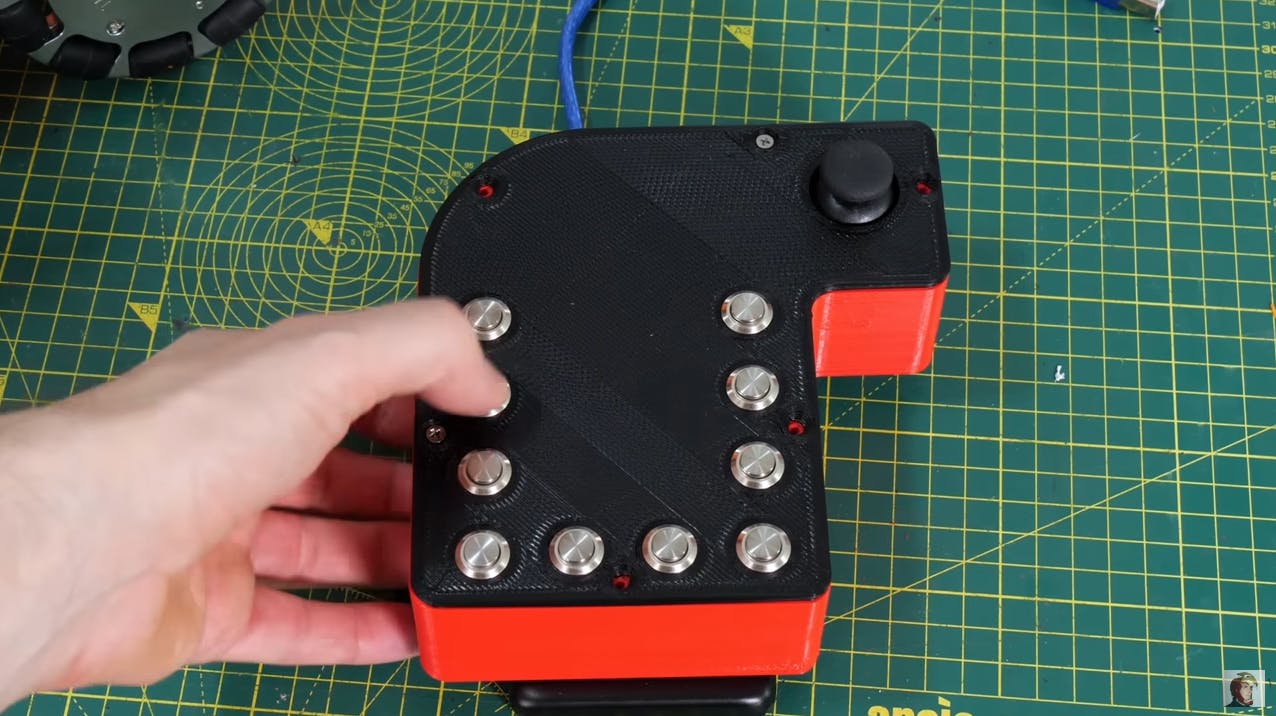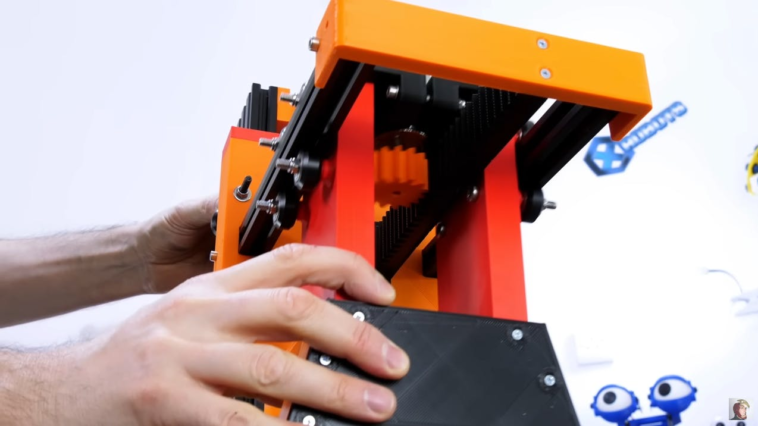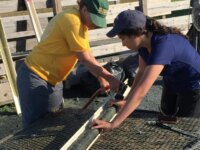While doing that work, I noticed that there are two different approaches to engineering solutions: the careful, elegant approach that uses the bare minimum hardware, and the “keep adding stuff until it works” approach. Both have their places and James Bruton is a master of the latter technique. His newest stair-climbing robot is the perfect example of over-engineering a solution, but it works and I love it.
Climbing stairs isn’t easy, but there are many approaches one can take. At the simple end of the spectrum, you might find a robot with only two drive motors that uses special wheels to claw its way up a staircase. At the opposite end of the spectrum, you have Bruton’s newest robot. It has a total of eight motors and moves from stair to stair in a very methodical manner. It does that in a series of small forward movements and lift operations. That required a robot with three sections, sort of like a stubby caterpillar. If you think of the middle section as the base, then the front section lifts up and the rear section moves down. By lifting the sections and moving forward in a choreographed dance, the robot can slowly creep up the stairs. A sliding lead weight helps the robot retain its balance.
Elegant? Nope. Cool? Absolutely.

Four of the eight motors exist for the differential drive of the front two sections—the rear section has omniwheels that don’t have drive motors and only roll. Another two of the motors drive lead screws to lift the sections vertically relative to the each other. One motor slides a pair of heavy lead weights forward and backward to change the center of gravity. The final motor slides the rear section forward and backward.

An Arduino Mega 2560 board controls all of those motors. The remote control also uses an Arduino Mega. Both Arduino boards have nRF24L01 radio transceiver modules to communicate with each other. The remote control has a joystick for directional movement and 10 different push buttons to control all of the other motors. Bruton has to activate those manually in sequence to guide the robot up the stair case.
Bruton started this project with the goal of ending up with a robot that could deliver beverages, but decided that this prototype is too complicated to be practical. He plans to develop another solution for that problem and will abandon this design, but it still has a lot of charm and should appeal to the mechanical engineers among our readers.




GIPHY App Key not set. Please check settings